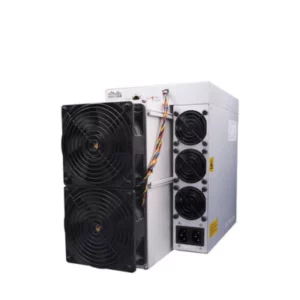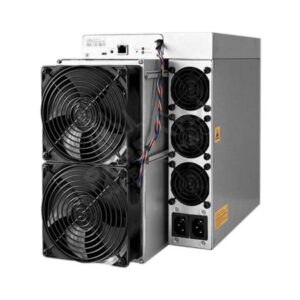Electricity Cost Mining

Mining: Electricity Cost
Mining cryptocurrency can be a profitable venture, but it can also be expensive. The cost of electricity is a major factor in the profitability of mining, and it can vary greatly depending on the location of the mining operation.
Electricity Cost Mining offers a variety of benefits that can help you save money on electricity costs. First, we have access to low-cost electricity from renewable sources. Second, we have a team of experienced engineers who can help you optimize your mining operations for efficiency. Third, we offer a variety of payment options that can help you save money on your electricity bill.
In addition to our low electricity rates, we also offer a number of other benefits that can help our customers save money. For example, we offer a free 1-year warranty on all of our mining equipment. This means that our customers can rest assured that their equipment is covered in the event of a failure.
If you are looking for a way to reduce your electricity costs and increase your profitability, Electricity Cost Mining is the perfect solution for you. We offer a unique combination of low electricity rates, a free warranty, and a variety of other benefits that can help you save money.
How much energy does mining take?
The amount of energy required for cryptocurrency mining varies depending on a number of factors, including the type of cryptocurrency being mined, the mining hardware being used, and the efficiency of the mining operation.
According to the Cambridge Bitcoin Electricity Consumption Index, the Bitcoin network consumes approximately 139.24 terawatt-hours (TWh) of electricity per year. This is equivalent to the annual electricity consumption of Argentina.
Other cryptocurrencies, such as Ethereum and Litecoin, also consume significant amounts of energy. For example, the Ethereum network consumes an estimated 79.45 TWh of electricity per year.
The energy consumption of cryptocurrency mining is a major concern for many people. Critics argue that cryptocurrency mining is a major contributor to climate change. However, proponents of cryptocurrency mining argue that it is a necessary part of the cryptocurrency ecosystem and that it helps to secure the blockchain network.
There are a number of ways to reduce the energy consumption of cryptocurrency mining. One way is to use more efficient mining hardware. Another way is to use renewable energy sources to power mining operations.
Here are some tips for reducing the energy consumption of cryptocurrency mining:
- Use more efficient mining hardware. Newer mining hardware is more efficient than older hardware, meaning that it consumes less energy to produce the same amount of hash power.
- Use renewable energy sources to power mining operations. Renewable energy sources, such as solar and wind power, are clean and sustainable energy sources.
- Overclock your mining hardware. Overclocking can increase the hash power of your mining hardware without consuming significantly more energy.
- Join a mining pool. Mining pools allow miners to combine their resources to mine cryptocurrency more efficiently.
By following these tips, you can reduce the energy consumption of your cryptocurrency mining operations and help to make cryptocurrency mining more sustainable.
How to calculate mining electricity costs?
To calculate your mining electricity costs, you will need to know the following:
- The power consumption of your mining rig
- The cost of electricity in your area
Once you have this information, you can use the following formula to calculate your mining electricity costs:
Mining electricity costs = (Power consumption of mining rig) * (Cost of electricity per kWh) * (Number of hours per day that the mining rig is running)
For example, if your mining rig consumes 1000 watts of power and the cost of electricity in your area is $0.10 per kWh, and you run your mining rig for 24 hours per day, your mining electricity costs would be:
**Mining electricity costs = 1000 watts * $0.10 per kWh * 24 hours per day = $24 per day**You can also use a mining calculator to calculate your mining electricity costs. Mining calculators are online tools that allow you to enter information about your mining rig and the cost of electricity in your area to get an estimate of your mining electricity costs.
It is important to note that your mining electricity costs may vary depending on a number of factors, such as the efficiency of your mining rig, the temperature of the environment in which your mining rig is operating, and the difficulty of the cryptocurrency you are mining.
Here are some tips for reducing your mining electricity costs:
- Use a more efficient mining rig. Newer mining rigs are more efficient than older rigs, meaning that they consume less power to produce the same amount of hash power.
- Overclock your mining hardware. Overclocking can increase the hash power of your mining hardware without consuming significantly more energy.
- Join a mining pool. Mining pools allow miners to combine their resources to mine cryptocurrency more efficiently.
- Use renewable energy sources to power your mining rig. Renewable energy sources, such as solar and wind power, are clean and sustainable energy sources.
By following these tips, you can reduce your mining electricity costs and make your crypto mining operation more profitable.
How Does Bitcoin Mining Work?
Bitcoin mining is the process by which new bitcoins are created and transactions on the Bitcoin network are verified. Miners use powerful computers to solve complex mathematical problems, and the first miner to solve a problem is rewarded with a certain amount of bitcoin. This process is also responsible for securing the Bitcoin network and preventing fraud.
Here is a more detailed explanation of how Bitcoin mining works:
- Miners collect transactions. Miners collect all of the transactions that have been broadcast to the Bitcoin network in the past 10 minutes. These transactions are then grouped together into a block.
- Miners add the block to the blockchain. Miners then compete to add the block to the blockchain. To do this, they must solve a complex mathematical problem. The first miner to solve the problem adds the block to the blockchain and is rewarded with bitcoin.
- Transactions are verified. Once a block is added to the blockchain, all of the transactions in that block are verified. This means that the miners have confirmed that the transactions are valid and that the senders have the funds to make the payments.
- New bitcoins are created. When a miner adds a block to the blockchain, they are rewarded with a certain amount of bitcoin. This is how new bitcoins are created.
The process of Bitcoin mining is very competitive, and miners need to use powerful computers to have a chance of solving the mathematical problems. This is why Bitcoin mining can be very energy-intensive.
Here are some of the benefits of Bitcoin mining:
- It helps to secure the Bitcoin network.
- It helps to prevent fraud.
- It creates new bitcoins.
- It can be a profitable business.
However, there are also some drawbacks to Bitcoin mining:
- It can be very energy-intensive.
- It can be very competitive.
- It requires specialized hardware.
- It can be risky.
Overall, Bitcoin mining is an important part of the Bitcoin ecosystem. It helps to secure the network, verify transactions, and create new bitcoins. However, it is important to be aware of the drawbacks of Bitcoin mining before getting involved.
What Is Bitcoin Mining?
Bitcoin mining is the process of adding new blocks of transactions to the Bitcoin blockchain and receiving Bitcoin as a reward. Miners use powerful computers to solve complex mathematical problems, and the first miner to solve a problem adds the next block to the blockchain. This process also helps to secure the Bitcoin network and prevent fraud.
Bitcoin mining is a complex process, but here is a simplified overview of how it works:
- Miners collect all of the pending transactions on the Bitcoin network.
- They group these transactions into a block.
- They compete to solve a complex mathematical problem.
- The first miner to solve the problem adds the block to the blockchain and receives a reward in Bitcoin.
- The block is then verified by other miners on the network.
- Once the block is verified, the transactions in the block are processed and added to the Bitcoin ledger.
Bitcoin mining is a very competitive process, and miners need to use powerful computers to have a chance of solving the mathematical problems. This is why Bitcoin mining can be very energy-intensive.
There are a number of different ways to mine Bitcoin. Some miners use their own computers, while others use specialized mining hardware called ASICs. Miners can also join mining pools, which combine the resources of multiple miners to increase their chances of solving a block.
Bitcoin mining is a profitable business for some miners, but it is important to note that it is also a risky one. The difficulty of mining Bitcoin increases over time, and the price of Bitcoin can fluctuate wildly. This means that miners may not always be able to make a profit.
Overall, Bitcoin mining is a complex and competitive process, but it is an important part of the Bitcoin ecosystem. It helps to secure the network, verify transactions, and create new Bitcoins.
-
Antminer X5$4,000
-
Antminer S21$3,860
-
Whatsminer M56S++$7,396



